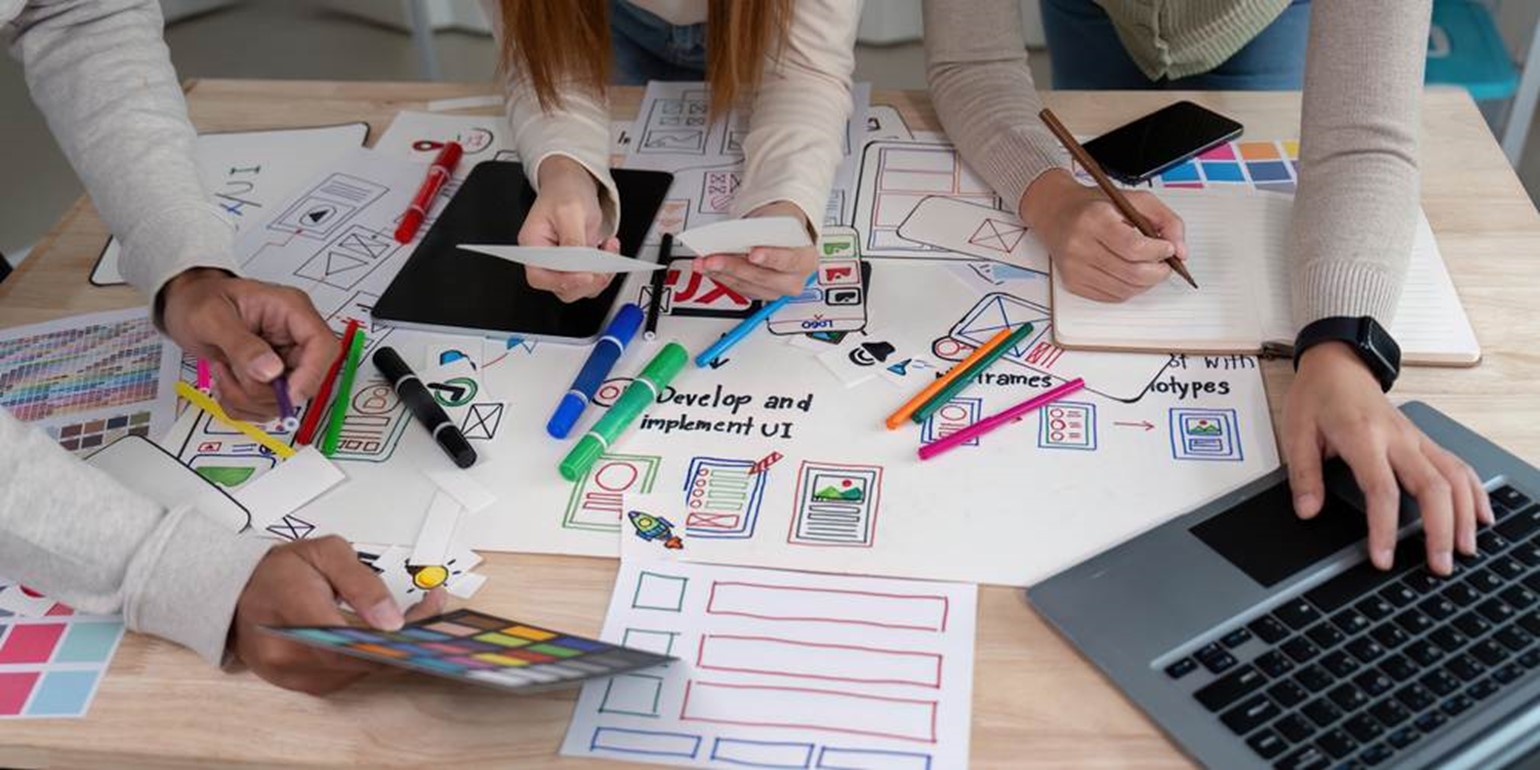Study Communication Design: What You Need to Know About Principles, Examples and Skills

What Is Communication Design?
Communication design is the practice of creating visual content that communicates messages clearly and effectively. It includes a variety of forms such as graphic design, digital media, advertising, branding, and user interface design. The goal is to connect with audiences through both visual and strategic elements.
In today's fast-paced digital world, communication design plays a critical role in shaping how we interact with brands, information, and technology. Whether it's a website, poster, packaging, or mobile app, good design helps people understand and respond to messages quickly and emotionally.
Unlike general graphic design, which often focuses on aesthetics and visuals alone, communication design goes further. It blends visuals with storytelling, strategy, and user experience to create meaningful interactions. Designers not only make things look good, but they also ensure that the message reaches the right audience in the right way.
6 Core Communication Design Principles
Great communication design is built on solid principles. These principles guide designers in creating clear, functional, and appealing visuals.
-
Visual Hierarchy
Visual hierarchy helps viewers understand what to focus on first. It uses size, colour, contrast, and positioning to highlight the most important elements. On a news website, the headline is large and bold at the top, while less important details are smaller and placed lower down.
-
Balance and Alignment
Balance creates a sense of stability in a design, whether symmetrical or asymmetrical. Alignment ensures that elements are visually connected and easy to follow. A restaurant menu with evenly spaced sections and left-aligned text looks clean and easy to read.
-
Contrast and Emphasis
Contrast makes elements stand out, drawing attention to key messages. Emphasis highlights important content by changing scale, colour, or font. In a flyer, using a bright red button on a black-and-white background grabs attention and encourages clicks.

-
Repetition and Consistency
Repetition creates unity across a design. It builds recognition and helps people feel familiar with a brand or message. Consistency keeps the experience coherent and smooth. A brand’s website and social media pages use the same colours, fonts, and logo placement for a unified look.
-
Colour Theory and Typography
Colour choices affect mood and emotion. Typography influences readability and tone. Together, they form the personality of a design. A children’s book uses playful fonts and bright colours to create a cheerful and fun reading experience.
-
Proximity and White Space
Grouping related items close together helps users understand their relationship. White space gives the design room to breathe and avoids clutter. On a business card, contact details are grouped, with enough white space around each section for clarity.
These are also essential components of visual communication, including design elements and principles, that form the foundation of effective visual messaging.
Difference Between Communication Design and Visual Communication Design
Although these two terms are often used interchangeably, they have distinct focuses. Communication design is broader and more conceptual. It includes storytelling, strategy, and audience targeting. Designers consider how and where a message will appear and how people will engage with it.
On the other hand, visual communication design focuses more on the visual execution. It’s about layout, imagery, typography, and colours. While communication design includes these, it goes a step further by integrating strategy and narrative.
To help you better understand the differences, here is a comparison table:
| Aspect | Communication Design | Visual Communication Design |
| Scope | Broad, includes visuals, strategy, and storytelling | Focused mainly on visuals such as images and layout |
| Goal | Deliver clear messages using both design and communication | Present information visually and attractively |
| Key Elements | Messaging, branding, user experience, media planning | Imagery, typography, colour, layout |
| Applications | Branding campaigns, advertising, and digital platforms | Posters, brochures, websites, infographics |
| Approach | Strategic and audience-focused | Aesthetic and layout-focused |
| Examples | Brand identity systems, UX/UI design, multimedia ads | Examples Brand identity systems, UX/UI design, multimedia ads Visual reports, flyers, editorial spreads |
5 Communication Design Examples
Communication design comes to life through real-world applications that shape the way we perceive brands, spaces, and stories. From national branding campaigns to cultural landmarks, each of the following examples demonstrates how thoughtful design can make a lasting impact. These cases highlight the power of visuals and messaging working together to influence perception and engagement.
Below are five real-world examples of effective communication and visual design:
-
Passion Made Possible – Singapore National Brand
Led by the Singapore Tourism Board and Economic Development Board, this campaign redefined the nation’s identity globally. With unified branding and a strong emotional message, it used visual storytelling across print, digital, and physical spaces. This campaign is a strong example of communication design using visual storytelling and consistent branding to build a national identity.
-
Singapore Airlines – Singapore Girl Branding
The iconic “Singapore Girl” remains one of the most recognisable branding efforts in aviation. Designed by French couturier Pierre Balmain, this campaign blends fashion, identity, and consistent visual language. It shows how communication design can build emotional connections and brand recognition through a coherent and memorable image.
-
ArtScience Museum – Visual Identity through Architecture
With its lotus-inspired architecture and strong visual presence, the museum serves as a landmark and branding tool for Marina Bay Sands. Its structure and digital campaigns reflect futuristic design values. This case demonstrates communication design through architectural form and multimedia storytelling to express brand vision.
-
The Interlace – Vertical Village Design
This award-winning residential development broke architectural norms. Its visual appeal and community-based design inspired real estate marketing campaigns that highlighted design thinking and urban storytelling. The project uses communication design to shape public perception and strengthen the connection between design and community.
-
Singapore Discovery Centre – Brand Refresh Campaign
The centre revamped its logo, displays, and digital presence with a theme, “Singapore Story, Ours to Create.” It’s a strong example of cohesive communication design across signage, digital media, and user journey.
This refresh illustrates how communication design ties visual identity, user engagement, and storytelling into one integrated experience.
5 Communication Design Skills You Need to Succeed

To thrive in communication design, you need more than just artistic talent. Practical skills and a strong mindset make a real difference.
-
Creative Thinking and Problem-Solving
Creativity fuels innovation. As a designer, you need to find fresh ways to solve problems visually and conceptually. This skill helps turn complex ideas into simple, engaging designs.
-
Software Proficiency
Modern designers must know how to use tools like Photoshop, Illustrator, InDesign, and Figma. These tools bring your ideas to life and are standard in the industry.
-
User Experience and Visual Storytelling
Understanding user needs is key. A strong communication designer creates user-centred designs that not only look good but also function well. Visual storytelling adds emotional value and strengthens the message.
-
Strategic Communication and Media Planning
Design is not just about visuals. You must think about timing, platforms, and audience behaviour. Planning how and when a design appears is part of delivering effective communication.
-
Collaboration and Feedback Adaptation
Most designers work in teams. You’ll need to communicate ideas, accept feedback, and adjust your designs when needed. Being flexible and open-minded helps you grow and improve.
Join SIM Communication Design Courses

If you're looking to pursue a career in communication design, the Singapore Institute of Management (SIM) has partnered with RMIT University, one of Australia’s leading institutions in the field, to offer the Bachelor of Design (Communication Design) (Top-Up). This course is ideal for diploma holders—specifically those with a diploma in Graphic Design, Communication Design or a related field from a polytechnic or similar institution—who wish to earn a globally recognised degree in just one year.
You’ll develop core skills in:
- Branding and visual identity
- UX/UI and digital product design
- Motion graphics and storytelling
- Strategic communication planning
This course combines creative thinking with real-world relevance. You’ll gain global exposure through Melbourne study tours and learn from international faculty. Upon graduation, students will receive a degree awarded by RMIT University.
With strong industry links, this course prepares you to thrive in today’s competitive market.
Read More: A Design Student Reviews SIM-RMIT's Bachelor of Design Programme
Conclusion
Communication design is more than just making things look nice. It’s about using design to solve problems, influence opinions, and connect with people. Whether you're building a brand, creating a campaign, or designing a website, strong communication design ensures your message is heard.
By understanding its principles, developing key skills, and exploring both communication and visual design, you'll be well-equipped to build a successful career in this exciting field.
FAQs
What is a communication design major?
A communication design major is an academic programme focused on studying visual and verbal communication to create effective, engaging designs. It covers graphic design, typography, branding, user experience, and multimedia, blending creativity with technical skills to convey messages across various media.
What is the role of a communication designer?
A communication designer creates visual solutions to communicate ideas, brands, or messages effectively. They design logos, websites, advertisements, and other materials, ensuring clarity and aesthetic appeal while meeting client or audience needs.
